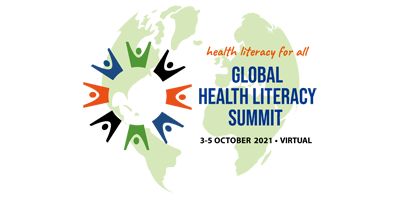Abstract Preview
Abstract
|
Title Food and health promotion literacy among employees with a low and medium level of education in the Netherlands |
|
Type Poster Presentation Only |
|
Theme Global Health Literacy Summit 2021 |
|
Topic Health literacy and health equity |
Authors
|
Main Author Hanne C. S. Sponselee, MSc1 |
|
Presenting Author Hanne C. S. Sponselee, MSc1 |
|
Co-Author Dr. Willemieke Kroeze1 2 Dr. Maartje P. Poelman3 Dr. Carry M. Renders1 Prof. Dr. Kylie Ball4 Prof. Dr. Ingrid H. M. Steenhuis1 |
Authors' Institution
|
Department / Institution / Country Health Sciences, Faculty of Sciences / Vrije Universiteit Amsterdam, Amsterdam and Amsterdam Public Health Research Institute / Netherlands1 Care for Nutrition and Health Group, School of Nursing / Christian University of Applied Sciences / Netherlands2 Chair Group Consumption and Healthy Lifestyles / Wageningen University and Research / Netherlands3 Institute for Physical Activity and Nutrition / Deakin University / Australia4 |
|
Abstract Content (abstracts should be written in Size 11 font, Arial font style) Background: Prior research indicates a positive association between socioeconomic position and health literacy levels. We hypothesize comparable socioeconomic gradients for food literacy. This study aims to determine the level of self-perceived food literacy and health promotion literacy among adults with a low and medium level of education and from various subgroups, as well as the association between these food and health literacy levels. Furthermore, this study aims to explore the associations of self-perceived food literacy (SPFL) and health promotion literacy (HPL) in BMI. Methods: A cross-sectional study was conducted among employees with a low and medium level of education. Descriptive analyses were performed to compute SPFL and HPL levels. Analyses of variance were performed to test differences between subgroups. The correlation between SPFL and HPL was computed by Pearson’s r. Multivariate linear regression analyses were used to explore 1) the association between SPFL and HPL adjusted for demographic characteristics 2) the associations between SPFL and HPL in BMI. Results: The majority (63.1%) of all participants (n=222) scored low on SPFL and 34.5% scored inadequate or problematic on HPL. No significant educational or weight-status differences were found in SPFL or HPL levels. On most levels, women compared to men and older compared to younger employees scored significantly higher. A small positive correlation between the two mean levels was found, r = .25, P < .001 (n=203). Multivariate linear regression analyses showed a significant association between SPFL and HPL (B = .31, 95% CI = .15–.48). No significant associations between SPFL and HPL in BMI were found. Conclusions: This study suggests there is room for improvement in SPFL and HPL among adults with a low and medium level of education. Future research should consider comparing low and middle socioeconomic with high socioeconomic groups when exploring food and health literacy. Regarding health promotion activities for adults with a low and medium level of education, it is recommended to focus on improving both food and health literacy. Furthermore, more research is needed to explore direct proxies of weight-status to better understand the role of food and health literacy in overweight patterns. |
Requires Audio or Video system for Presentation?: No
